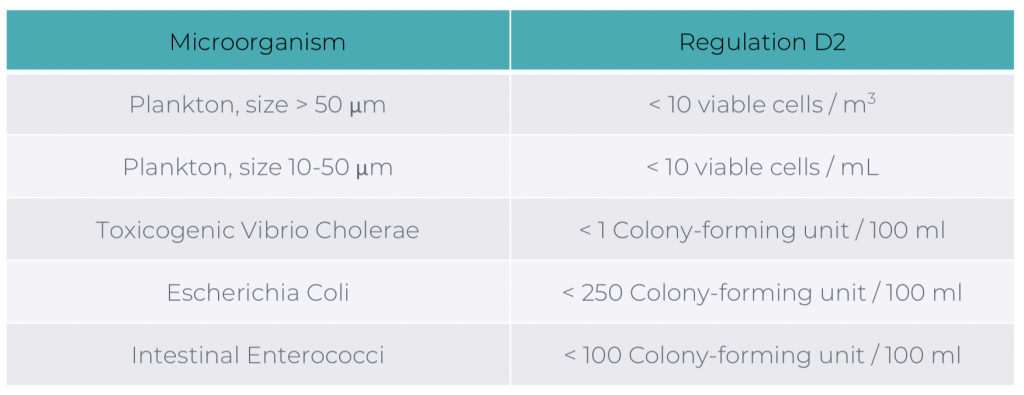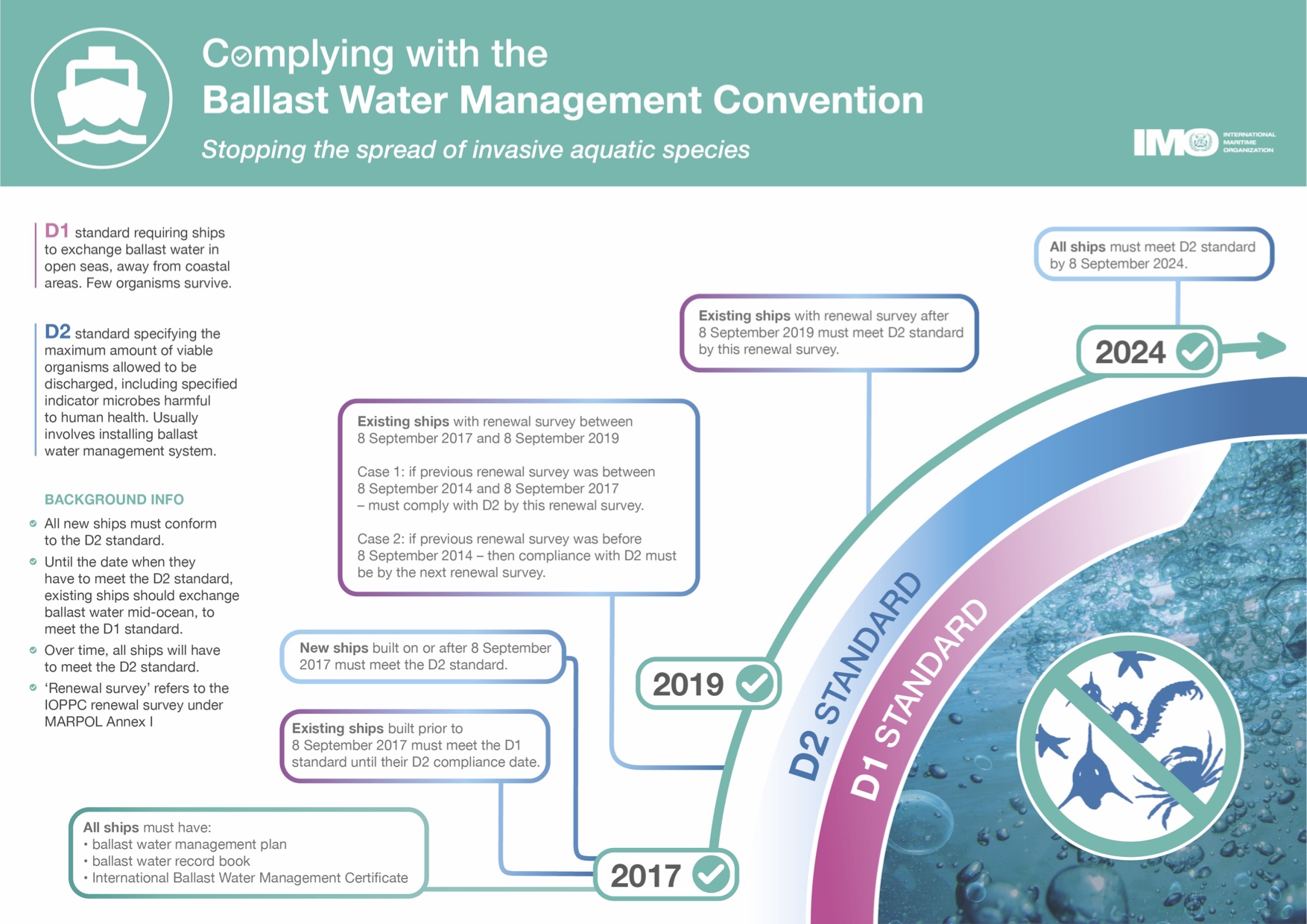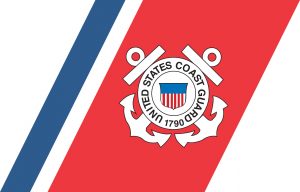D2 Discharge Standard is a performance standard that specify maximum amount viable organisms allowed to be discharged.

Ballast water discharge standards are set by IMO revised G8, which establishes numerical limits for different size classes of organisms that may be released in specified volumes of water.
Vessels sailing in U.S. waters will be required to comply with USCG ballast water discharge standards and the USEPA Vessel General Permit (VGP), in addition to State ballast water regulations.
There are more than 100 ballast water systems in the market with aggressive treatment options. Generally, most technologies involve methods of filtering off bacteria and pathogen cells larger than 50 microns in the first stage, and then follow by the processes of actively killing the remaining bacteria and pathogens with treatment options such as UV light, electrochlorination, deoxygenation, heating/pasteurisation, injection of active substances, for example.
The problem with the current ballast water treatment systems is that the aggressive treatment needs a lot of energy which causes more pollution to the air while trying to save the health of the ocean. The systems also often come with high cost requiring retrofit work for existing ships.
THERE MUST BE A BETTER METHOD TO PROTECT THE AQUATIC ECOSYSTEM. In fact, IMO has recommended in its guidelines, verbatim, that a “more exhaustive list of standard methods and innovative research techniques be considered” in anticipation of the evolution of better methodologies.
Water covers 70% of the earth’s surface. There is plenty of water available in the mid ocean that meets the ballast water discharge standard. This large amount of compliant water can be put to good use to solve the human-made problem of transportation of invasive species in the ballast water of ships without aggressive treatment.
IMO, International Convention for the Control and Management of Ship’s Ballast Water and Sediments (BWM), Annex – Section B Management and Control Requirements for Ships: “Other methods of ballast water management may also be accepted as alternatives to the ballast water exchange standard and ballast water performance standard, provided that such methods ensure at least the same level of protection to the environment, human health, property or resources, and are approved in principle by IMO’s Marine Environment Protection Committee (MEPC).”
USCG, 46 CFR 162.060-10 (b)(1): “If an evaluation, inspection, or test required by this section is not practicable or applicable, a manufacturer or independent laboratory may submit a written request to the Commanding Officer (MSC), attn: Marine Safety Center, US Coast Guard 7430, 2703 Martin Luther Jr. Avenue SE., Washington DC 20593-7430, or by email to msc@uscg.mil. for approval of alternatives as equivalent to the requirements in this sector. The request must include the manufacturer’s justification for any proposed changes and contain full descriptions of any proposed alternative tests.”



